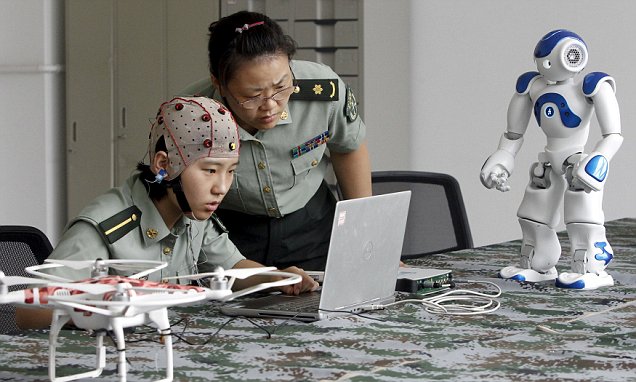
The technology uses a brain computer interface known as a electroencephalograph, which uses electrodes embedded in a cap to detect tiny changes in the electrical activity of the brain.
By training a computer to recognise particular patterns that accompany commands, such as turn left or turn right, this can be then transmitted to control the robot. Among the other projects being developed at the laboratory are drones that can also be controlled using a brain headset.
The technology is still fairly rudimentary and requires a great deal of concentration to get the robots to perform even the simplest of tasks. The equipment was also only 70% accurate at the moment.